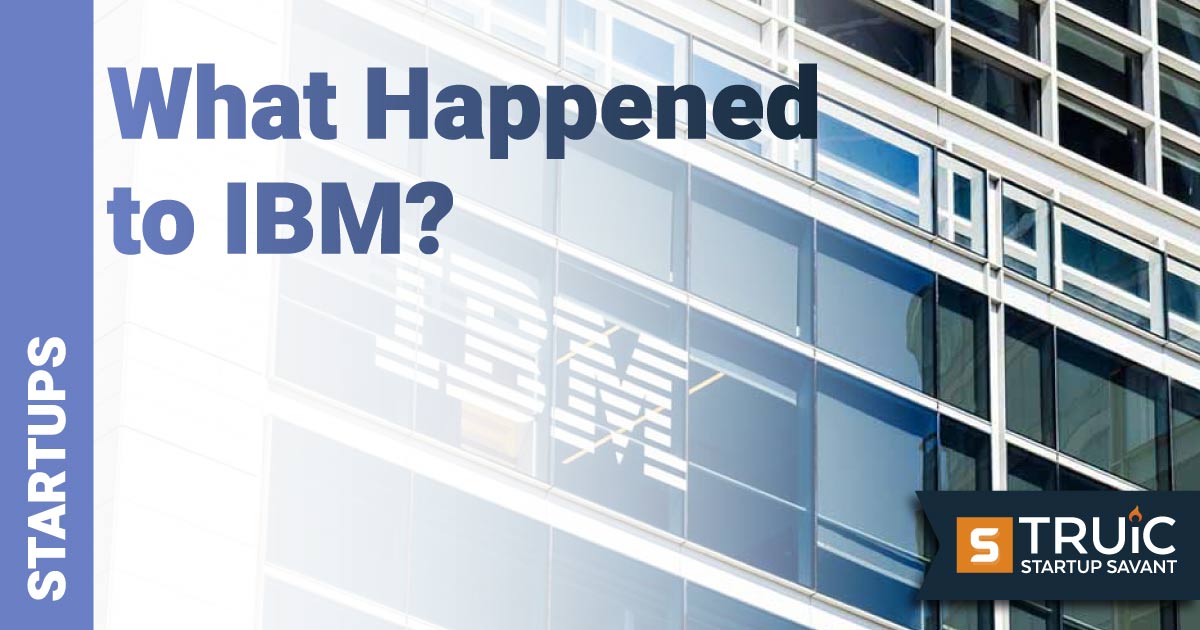What Happened to IBM?
The Highs and Lows of a Tech Icon

Last Updated: By TRUiC Team
Ever since computers were first invented, IBM has been a leading brand in the computing industry. Even today, IBM remains one of the most recognizable companies across all industries. Despite the fact that IBM continues to push computing advances forward, though, the IBM brand does not currently enjoy the same lofty status it once did, and plenty of feisty competitors have risen up to carve a slice out of IBM's market.
In this article, we will explore the illustrious history of IBM as well as the factors behind its recent decline to help you better understand the interesting highs and lows of this tech icon.
The Race to Create the Best PC
Though the IBM brand is today synonymous with computers and computing technology, the company that would eventually become IBM was formed long before the world's first functional computer was ever invented. In the late 1800s, Herman Hollerith formed a company that he named the Computing, Tabulating & Recording Company (C-T-R). Initially, the focus of C-T-R was to create punch-card-based tabulating machines, and the company was awarded its first major contract in 1890 producing tabulating machines for the 1890 US census.
In 1914, Thomas J. Watson joined C-T-R as its general manager and became the company's president a year later in 1915. Under Watson's guide, the company changed its name to International Business Machines (IBM) and began producing office machines such as electric typewriters. It wasn't until the 1940s that IBM began experimenting with computing technology — though the company's first steps into this budding industry were little more than modest advancements to its tabulating machines.
Fast-forward about a decade, and the race to create the world's first functional and affordable computer was in full swing. Though the first programmable digital computer — called ENIAC — was invented in 1945 by the University of Pennsylvania's Moore School of Electrical Engineering under a contract from the US Army, it was a year later in 1965 that IBM kicked off the computing revolution with the release of the System/360 family of mainframe computers.
At the time, the idea of a general-purpose computing machine designed to accommodate interchangeable software rather than perform a single, specific function was considered a big gamble. In a matter of years, though, IBMs System/360 computers became some of the most dominant products in the marketplace, and IBM firmly established itself as the world's leading computer company.
For a time, IBM enjoyed unrivaled success. The fact that IBM produced software that was only designed to run on IBM computers made it challenging for new competitors to dip into IBM's market, and IBM smothered most new companies in the computing industry before they were even able to get their footing. By 1976, IBM was firmly positioned at the top of the computing food chain. The company couldn't have known at this time, though, that a man named Steve Jobs was working in his garage on an innovation that would forever change the computing industry and IBM's place in it.
The Decline of IBM
IBM's System/360 family of computers was nothing short of revolutionary for the time, but they were a far stretch from the PCs we know today. The fact that these computers were the size of a large dresser and cost up to $2 million apiece to purchase outright made them completely out of reach for individual users. While IBM was enjoying a world where computers were only used by large businesses (and IBM computers were the only product available for this purpose), Steve Jobs was envisioning a world where personal computers were affordable and accessible to everyone.
When Steve Jobs and Steve Wozniak founded Apple and debuted the Apple 1 — a computer the size of a microwave oven that cost only a few hundred dollars to purchase — IBM's time as the only real player in the computing industry came to a screeching halt.
In a matter of years, IBM went from the only store in town to a company that suddenly found itself behind the times. With the Apple 1 capable of doing everything that IBM's System/360 computers did at a fraction of the size and cost, consumer demand for IBM computers rapidly declined.
The next few decades were challenging for IBM, with the company reporting losses in the billions for years along the way. It wasn't until the 1990s that IBM began to regain its footing, shifting to primarily producing software and hardware components for the new era of personal computers.
While IBM did survive its decline and today remains one of the world's leading computing brands, there are still important lessons to be learned from IBM's fall. The story of IBM shows that even the most disruptive and forward-thinking companies can quickly find the world passing them by if they are not committed to staying on top of trends and advancements. At a time when every aspect of our world continues to evolve at a dizzying pace, this is an important lesson for entrepreneurs and startup owners to keep in mind.


